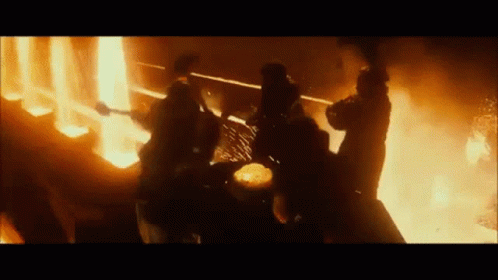In my previous blog post, I explained that I had this game ready for May when I got a better idea to publish. Originally, this came to be (as most of these games have) through a conversation with other game designers. This one was about whether crafting belongs in the heroic fantasy-focused tabletop RPGs. I've entered the discussion claiming that it can, but in the end, I do agree that it depends on the circumstances and the story one wishes to tell. Either way, what came of it was the system below, which I quite grew to like. It's what Play It by Cheer! (released in May) was initially based on, but that game has evolved into something very different the more I worked on it.
I hope you'll enjoy this article, and have a wonderful day!
Hacks of One Trade
Players describe their craftsmen and their shared trade. Choose one specialization:
- Brisk. Adds +1 to Progress increases.
- Cautious. Can ignore a Steps and Progress reduction once per item.
- Prepared. Adds +2 to Progress before crafting.
- Stylish. Has cool equipment.
The GM describes a customer, their item, and its requested qualities.
The craftsmen list the planned qualities and get to work.
Qualities |
Steps |
|---|---|
| 4 | 10 |
| 5 | 15 |
| 6 | 21 |
| 7 | 28 |
| 8 | 36 |
| 9 | 45 |
| 10 | 55 |
Progress begins equal the number of craftsmen (max 6), Steps are found in the table above. Track them like this: Progress/Steps.
Craftsmen take turns working on the item. Describe how, and roll 2d6.
| 6+ | Progress+1, and Steps-1 if the craftsman chooses to. |
| Otherwise, | Progress-1, and Steps-1. |
If Progress ≥ Steps, the item is finished, possessing a number of qualities according to its final Steps number listed on the table (round down). The item is destroyed if Progress ≤ 0. Item can't be finished or destroyed without crafting.
Each craftsman receives coins equal to the number of finished item's Qualities. If they spend 10 coins on improving, they gain an extra specialization. Treat the Steps column as costs for further progression.
 |
| Love it or hate it, I really like this sequence from the first Hobbit movie. I don't care how exaggerated or unrealistic it is, it looks awesome. |
The initial draft that this was loosely based upon came from Izzy, who wanted a crafting minigame. The biggest issue was, that he required tracking of three separate numbers. I couldn't help myself and took it upon myself to tweak his system by boiling two numbers into one and giving them a neat X/Y format that's intuitive. What isn't intuitive is that when we use this notation normally, for example, "2/10 flags found", we expect the latter number (10 in this example) to be fixed. What I've done is that I've allowed for this value to change too, and define how well the final product is made.
I like it when I have space in the 200-word TTRPG for player options, which is what Specializations at the start of the ruleset are for. Even better when I can add something silly, which in this case has to be Stylish. Because who wouldn't want to be "that one tailor with the coolest sewing machine", or "the carpenter who's using Mjolnir replica, no kidding!", right?
If there is a downside to this system, it's that you might have to come up with up to 10 qualities for an item and that there isn't much to say about progression beyond "it exists". Part of what made me rework Play It by Cheer! into its own rules system instead of a proper Hacks of One Trade hack is the fact that I wanted the musical qualities to come in opposing pairs that would fit. For example, instrumental vs. acapella is technically an opposing pair, but it's unfitting because you don't accidentally stop playing an instrument and start imitating it during the concert (or at least not unintentionally). It might be tough to come up with 10 qualities, and a lot of work to achieve them all, but I haven't really had time to playtest this.
That's about it for now when it comes to Hacks of One Trade. Just in case you're wondering about the title, it's a riff on the idiom "jack-of-all-trades". Hack can be somewhat synonymous with a craftsman (not sure if just a bad one or generally, it could work either way I hope), and it's meant to say that the players are all crafting the same kind of stuff: everyone is scribes, blacksmiths, basket-weavers, etc.
In the meantime, I'll see what I do for June. Yesterday I came up with an amazing game mechanic that I had to add to Runehack: The Asterist immediately, and I think it sparked my interest in finishing the ruleset once again. I'm absolutely thrilled about it and believe that for this one idea, the game was worth waiting entire months for. That being said, I hope to release a 200-word TTRPG for July as well, and right now I got this one gizmo on my desk that I might experiment with.
 |
| Pondering the orb is so 2021. |
Thank you for reading, and have a nice day!













